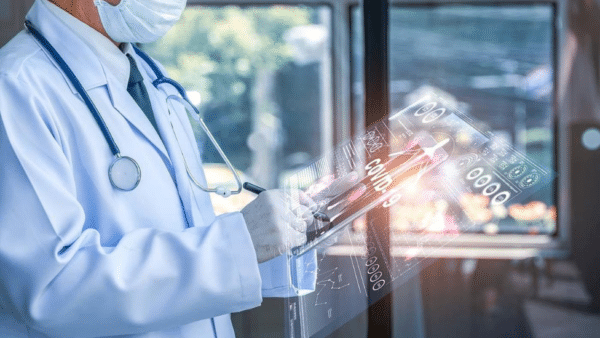
One year into the COVID-19 crisis, the United Kingdom is still under lockdown. The virus has paralyzed the nation and has changed healthcare delivery especially for people with life-threatening conditions. Remote monitoring has proved to be extremely effective to care for vulnerable patients at home, given the shortages in care facilities capacity. Professor Jay Wright shared his perspective during the Heart Rhythm Congress about the current RM situation in the UK.
What is the Remote Monitoring (RM) situation in the UK?
- Remote ICD and CRT monitoring was adopted years ago in the UK.
- However, remote pacemaker follow-up is still lagging.
- Only 20% of remote follow-up in the UK (all ICD and CRT).
- RM is reimbursed – payment by results system.
- RM is performed by physiologists.

Remote monitoring and quality of life in patients with cardiac implantable electronic devices (CIEDs): Clinical case
During the Heart Rhythm Congress roundtable hosted by Trudie Lobban, Professor Jay Wright, EP at the Liverpool Heart and Chest Hospital in the UK shared the clinical case of his father-in-law, aged 84 who had a pacemaker due to a post syncope episode he experienced 3 years ago.
1- Patient background
The patient was admitted to the hospital and had an MRI showing a left cerebellar stroke. He was then inserted with a pacemaker and required to attend face-to-face follow-up appointments on annual basis. During these appointments, subclinical atrial fibrillation was discovered (less than 24 hours).
2- Impact of heart events on cardiac patients
Unfortunately, the patient had experienced a syncope episode while driving during the COVID-19 period. He was admitted to the hospital, his pacemaker was interrogated, and a non-sustained VT was found. The patient was put on a beta-blocker, reassured, and sent home. However, he was traumatized by the experience, and his whole world fell apart. The patient could not drive anymore and was too terrified to even exercise.
3 – Remote cardiac monitoring delivers peace of mind to patients
An MRI was performed to confirm no further change in his old stroke and the patient was put on remote pacemaker follow-up. The beta-blocker has stopped the NSVT and the patient has slowly regained the confidence to exercise and drive.
Thanks to the remote monitoring, the medical team was able to program an alert on to check if the patient goes into atrial fibrillation for more than 24 hours and to switch him to long-term anticoagulation when needed.
“The remote follow-up facility of a pacemaker has completely changed his life and mine because he is not ringing me in an anxious state anymore. I think it just confirms the patient level benefit that remote follow-up has brought. We have seen this with our CIEDs patients for almost a decade now. Patients who have had a shock and are then followed up remotely – knowing that alerts run, knowing that we are at the end of a phone, at the end of email, transmission of data – gives them huge reassurance. I think this is going to be one of the major driving forces and I don’t think there’s anything stronger than a patient-based story of the benefits for driving us forward in our question to put everybody on to remote follow-up “, says Professor Wright.
The real challenge hindering the best use of RM is threefold: Money, People, and Data.
Moneywise, reimbursement is hindering the adoption of remote monitoring. Facilities are needed for the procedure such as box top units which are charged in addition to the cost of the hardware of the device. In the UK, the demand for box top units went through the roof during the pandemic as everyone wanted to put their new implants straight on to remote monitoring, resulting in a crisis.
There is also the aspect of data management. Health professionals will have to manage a vast number of patients that have suddenly been put on remote monitoring. It is therefore important to allocate a person for the task.
COVID-19 had been a real catalyst driving the shift to RM at a speed that was not expected by healthcare providers which can be challenging. However, the Covid-19 crisis was a wake-up call to change care procedures, accelerate digitalization and improve efficiency for the healthcare community in order to always circumnavigate crisis.
Watch Professor Jay Wrifght intervention during HRC 2020
